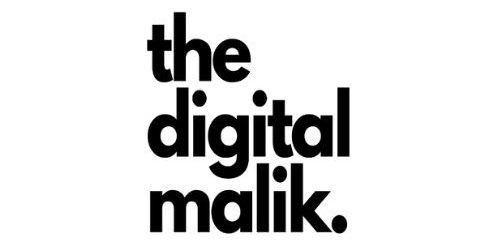Unlock Your Inner Genius: 5 Hobbies That Make Money

Hey there, fellow money-making enthusiast!
I’m pumped to share this guide with you on turning your hobbies into profitable online hobbies that make money!
You know how some of the most successful side hustlers started with something they just loved doing?
Well, that’s exactly what we’re going to tap into here.
I’m here to help you transform your online interests into a steady income stream.
Whether you’re a creative soul, a tech wizard, or a knowledge seeker, there’s an online money-making hobby out there just waiting for you.
Let’s explore these opportunities together to figure out what’s the best fit for you and what’s not, just like I’d explain them to a close friend seeking extra income from home
Let’s go! 🚀
Key Takeaways
- Learn how to monetize creative, technical, and educational hobbies online
- Explore opportunities across 8 major categories with varying skill levels
- Start earning with minimal investment through proven online platforms
- Transform your interests into a sustainable income stream
How To Find Hobbies That Money Making: A Beginner’s Guide to Online Income
Let me tell you something that might blow your mind – you probably already have money-making skills right under your nose!
I remember when I first started exploring online income opportunities, I was totally overwhelmed.
Like, seriously overwhelmed. You know that feeling when you walk into a huge buffet restaurant and don’t know where to start?
That was me, staring at all these online money-making options! But I was hungry (not for the buffet, lol), I wanted to learn and explore and do.
Here’s the thing – starting your money-making journey is a lot like learning to cook (bear with me on this analogy!).
You don’t jump straight into making a fancy five-course meal, right?
Instead, you start with the basics you already know.
Maybe you’re great at explaining things to people (hello, potential online tutor!), or perhaps you’ve got an eye for spotting typos (future proofreader in the house!).
I made the rookie mistake of trying to learn everything at once – web design, digital marketing, content writing, you name it.
Big mistake!
It was like trying to juggle while riding a unicycle – spectacular failure guaranteed!
Instead, what actually worked was taking inventory of my existing skills.
Pro tip: grab a notebook and write down everything you’re good at, even if it seems trivial.
Trust me, there’s probably a way to monetize it online.
Let’s talk about time investment, because this is where a lot of people trip up (myself included!).
- You don’t need 40 hours a week to start making money online.
- Even 30 minutes a day can get the ball rolling.
Think of it like planting a garden – you start small, nurture it consistently, and watch it grow.
I started with just an hour every evening after dinner, and guess what?
Those small time blocks really added up!
Now, about setting realistic income goals – this is crucial, folks!
When I first started, I thought I’d be making thousands in my first month (spoiler alert: I didn’t!).
A more realistic approach is to start with small targets, like earning your first $100 online.
It’s like those fitness apps that get you from couch to 5K – you start small and build up gradually.
3 practical tips – advice for getting started
- Skills Assessment (The Reality Check):
- List EVERYTHING you’re good at (seriously, even if it’s just organizing spreadsheets)
- Rate your digital literacy honestly (can you use basic online tools?)
- Identify transferable skills from your day job or hobbies
- Quick-Start Opportunities (The Low-Hanging Fruit):
- Survey sites and user testing (quick cash, low barrier to entry)
- Content writing if you’re good with words
- Virtual assistance if you’re organized
- Online tutoring if you’re patient and knowledgeable
- Time Management (The Game Plan):
- Start with 5 hours per week minimum
- Block out specific times in your calendar
- Use the ‘power hour’ technique (focused work with no distractions)
Here’s something nobody tells you – your first attempt might not work out, and that’s totally okay!
I began by blogging about Brazilian Jiu Jitsu, initially focusing on selling products related to the sport.
However, I soon realized I wasn’t treating my blog as a business. After some adjustments, I finally found my stride.
It’s like dating – sometimes you need to kiss a few frogs before finding your prince(ss), so they say!
Remember, starting your money-making journey isn’t about becoming an overnight millionaire.
It’s about building sustainable and diverse income streams that align with your skills and schedule.
Take it from someone who’s been through the trenches – start small, stay consistent, and keep learning.
You’ve got this, friend!
And hey, if I could figure it out, anyone can, you gotta put the work in! 🚀

Digital Content Creation: Your Gateway to Online Income
Okay, let me share something wild with you – I started my digital content journey with just a smartphone and a whole lot of determination!
Think of Digital Content Creation like being a chef in the world’s biggest restaurant (the internet).
You don’t need a fancy kitchen to start cooking up amazing content that people will love and pay for!
Let’s get real about starting with minimal investment.
You know how they say you need expensive cameras and fancy microphones? Total myth!
You start your YouTube channel using just my phone and free editing software.
It’s like learning to drive – you don’t start with a Ferrari, you start with something that gets you from point A to point B.
The key is starting with what you have and upgrading as you earn.
Now, about those juicy returns – different platforms are like different neighborhoods in a big city, each with its own vibe and earning potential.
YouTube, for instance, can be like a faithful ATM once you achieve the monetization threshold (that magical 1,000 subscribers and 4,000 watch hours).
But here’s the secret sauce – don’t put all your eggs in one platform basket!
5 Most Profitable Hobbies (Based on My Experience)
- YouTube Content (The Long Game Champion):
- Tutorial videos are like gold mines (especially tech and how-to content)
- Revenue streams: ads, sponsorships, affiliate marketing
- Pro tip: Focus on searchable content, not just trending topics
- Starting cost: Literally $0 with your smartphone
- Blog Writing (The Silent Money Maker – my favorite ❤️ ):
- Niche sites can earn $500-$5000+ monthly through:
- Newsletter Creation (The Hidden Gem):
- Platforms like Substack make monetization super easy
- Start free, build audience, then transition to paid
- Sweet spot: $5-10 monthly subscriptions
- Minimal startup costs, maximum flexibility
- Podcast Production (The Rising Star):
- Start with free platforms like Anchor
- Monetize through:
- Sponsorships ($15-50 per 1000 listeners)
- Patreon memberships
- Premium episodes
- Initial investment: $50-100 for a decent microphone – (you want to upgrade as soon as you can, audio quality is very important)
- Digital Products (The Passive Income Dream):
- eBooks
- Online courses
- Templates
- Printables
- Digital art
- Investment: mainly time and brain power!
Here’s something nobody tells you about Content Creation – it’s not about being perfect, it’s about being consistent and authentic!
I remember publishing my first blog post and obsessing over every word.
Now?
I focus on helping my audience solve real problems, and the money follows naturally.
The secret formula?
It’s like making a sandwich – layer different monetization methods on top of each other.
Don’t just rely on ad revenue; mix in Affiliate Marketing, Digital Marketing & Products, and Sponsored Content.
I started with simple blog posts, added a YouTube channel, and then created digital products based on what my audience kept asking for.
Remember, every successful content creator started exactly where you are now.
The key is to pick a platform, stick with it for at least 6 months, and keep learning and adjusting your strategy.
Start with what you know, share what you learn, and always, always focus on providing value to your audience.
Trust me, the money will follow! 🎯
How To Turning Your Creative Passion into Profit: A Beginner’s Guide
Let me tell you a funny story – my first attempt at selling digital art was a complete disaster!
I priced my work way too low (like, coffee-money low) and ended up spending hours on revisions because I didn’t set clear boundaries.
But hey, we all start somewhere, right?
Think of your creative journey like learning to cook, it’s one of the best analogies – you start with basic recipes before tackling that fancy soufflé!
Starting Your Creative Business (The Smart Way)
First things first – choosing the right platform is like picking the perfect spot for your lemonade stand.
You want somewhere with lots of traffic but not so much competition that you’re lost in the crowd.
From my experience (and plenty of face-palm moments), here’s where beginners should start:
- Digital Art and Design Platforms:
- Etsy (Perfect for digital products, low barrier to entry)
- Fiverr (Great for building your first client base)
- Society6 (Print-on-demand, zero upfront costs)
- Redbubble (Another fantastic print-on-demand option)
Pricing Your Work (Without Selling Yourself Short)
Oh boy, pricing – this is where most creatives (including yours truly) get stuck!
Here’s my tried-and-tested formula:
Hourly Rate = (Living Expenses + Business Costs + Savings Goal) ÷ Monthly Working Hours
For example, if you need $3000 monthly and work 100 hours:
- Basic calculation: $30/hour minimum
- Add 30% for business expenses
- Final rate: around $40/hour
5 Essential Tools (Without Breaking the Bank)
Here’s something nobody tells you – you don’t need top-of-the-line everything to start!
It’s like building a house – start with the foundation and add fancy fixtures later.
Here’s your starter toolkit:
- Digital Art Creation:
- Free option: Krita or GIMP
- Budget option: Clip Studio Paint ($50)
- Investment option: Adobe Creative Cloud ($52/month)
- Graphic Design:
- Free option: Canva
- Mid-range: Affinity Designer (one-time $55)
- Pro: Adobe Illustrator
- Photo Editing:
- Free: GIMP or Darktable
- Affordable: Luminar ($70 one-time)
- Professional: Adobe Lightroom
- Music Production:
- Free: Audacity, LMMS
- Mid-range: FL Studio ($199)
- Pro: Ableton Live
- Animation:
- Free: Blender
- Beginner: OpenToonz
- Professional: Adobe Animate
Smart Money-Making Strategies (Learned the Hard Way)
- Digital Art Creation:
- Start with print-on-demand sites
- Create digital asset packs (brushes, textures)Offer tiered pricing for commercial licenses
- Graphic Design Services:
- Begin with logo design packages
- Create social media template bundles
- Offer brand identity packages
- Photography Editing:
- Preset packs are hot sellers!
- Wedding photo editing services
- Real estate photo enhancement
- Music Production:
- Stock music for content creators
- Custom jingles for businesses
- Sound effect packages
- Animation:
- Explainer video packages
- Logo animations
- Social media animated assets
3 Pro Tips from My Journey:
- Portfolio Building:
- Create 5-10 strong pieces in your niche (in my case it was blog posts 15 Informational and 3 transactional on one niche subject)
- Document your creative process (clients love this!)
- Show variations of similar works
- Client Management:
- Always use contracts (learned this the hard way!)
- Take 50% upfront for custom work
- Set clear revision limits
- Time Management:
- Track your working hours religiously
- Schedule creative time during your peak hours
- Build in buffer time for revisions
Here’s the truth about creative monetization – it’s not just about talent, it’s about treating your creativity like a business.
Think of it like tending a garden:
- you need to plant the seeds (your initial works)
- water them regularly (consistent creation)
- pull the weeds (bad clients/projects) to help your garden grow!
Everyone starts somewhere. Your first piece doesn’t have to be perfect, but it does have to exist.
Start creating, start sharing, and most importantly, start believing in the value of your creative work.
Trust me, there’s someone out there willing to pay for your unique creative perspective! 🎨✨

Teaching and Coaching Online: Your Guide to Sharing Knowledge for Profit
Are you an expert in a particular field and want to share your knowledge with others?
Teaching and coaching online can be a rewarding and lucrative career path.
For years, I thrived in roles where mentoring and leading teams were my bread and butter in Cyber Security Space.
So, when the opportunity to translate those skills into a profitable online business presented itself, it felt like a natural progression.
This guide will equip you with the knowledge and strategies to effectively share your expertise online.
Whether you’re a seasoned professional looking for a new income stream or simply passionate about helping others lear.
Think of online teaching like being a chef at a virtual restaurant.
Your knowledge is the menu, and your teaching style is the special sauce that keeps students coming back for more.
The best part?
You don’t need a fancy kitchen (or office) to get started!
How to Find Your First Students (The Smart Way)
Remember playing hide and seek as a kid?
Finding your first students is kind of like that, except you actually want to be found!
How to Find Your First Students?
- Identify your niche: Focus on a specific area of expertise and target a specific audience.
- Create a strong online presence: Build a website, social media profiles, and other online platforms to showcase your expertise and connect with potential students.
- Offer free consultations: Provide free consultations or assessments to potential students to demonstrate your expertise and build trust.
- Partner with other professionals: Collaborate with other professionals in your niche to reach a wider audience.
- Use online directories: List your services in online directories, such as Clarity or Coach.me, to reach a wider audience.
Here’s my tried-and-tested strategy (start where you’re known):
- Tell everyone (and I mean everyone) what you’re offering
- Post in relevant Facebook groups (not spammy, be helpful!)
- Leverage LinkedIn if teaching professionals
- Offer first-session discounts (I started with 50% off for first-timers)
- Platform Selection (Where the Money Is):
- Udemy: A popular platform for creating and selling online courses, with a large audience and competitive pricing.
- Teachable: A platform for creating and selling online courses, with a focus on ease of use and customization.
- Thinkific: A platform for creating and selling online courses, with a focus on ease of use and customization.
- Kajabi: A platform for creating and selling online courses, with robust marketing and sales tools built in.
Final Thoughts
Listen, starting any new hustle feels overwhelming.
Transforming your hobby into a money-making venture isn’t just a dream – it’s totally achievable!
But remember, every pro content creator or online coach was once a clueless newbie.
Focus on what you love, take consistent baby steps, and keep learning from every mistake.
If I could do it—and trust me, I’ve messed up plenty—I’m confident you can too.
Now go out there and make something awesome happen!
You got this, friend. Go get your slice of that online money-making pie!
And if you ever feel stuck, just remember: we’re all learning and growing together.
Let’s do this. 🚀
Frequently Asked Questions(FAQs)
How long does it take to start making money from online hobbies?
Most creators see their first earnings within 3-6 months, but significant income ($1,000+ monthly) typically takes 12-18 months of consistent effort. My first YouTube check came after 8 months, but boy, was it worth the wait!
How much initial investment is needed?
Many online money-making methods require zero upfront investment besides your time and existing internet connection. However, setting aside $100-200 for basic tools (like a good microphone or writing software) can help accelerate your progress.
Can these hobbies replace a full-time income?
Yes! According to recent studies, 32% of online creators make $100K+ annually from their hobbies.
Can I make money online if I’m not tech-savvy?
Absolutely! While basic computer skills are helpful, many opportunities (like tutoring or consulting) rely more on your existing knowledge and communication skills than technical expertise.
How much time do I need to invest weekly?
Start with 5-10 hours per week. It’s like growing a plant – consistent care matters more than occasional big efforts. I began with 2 hours daily after work and gradually scaled up.






